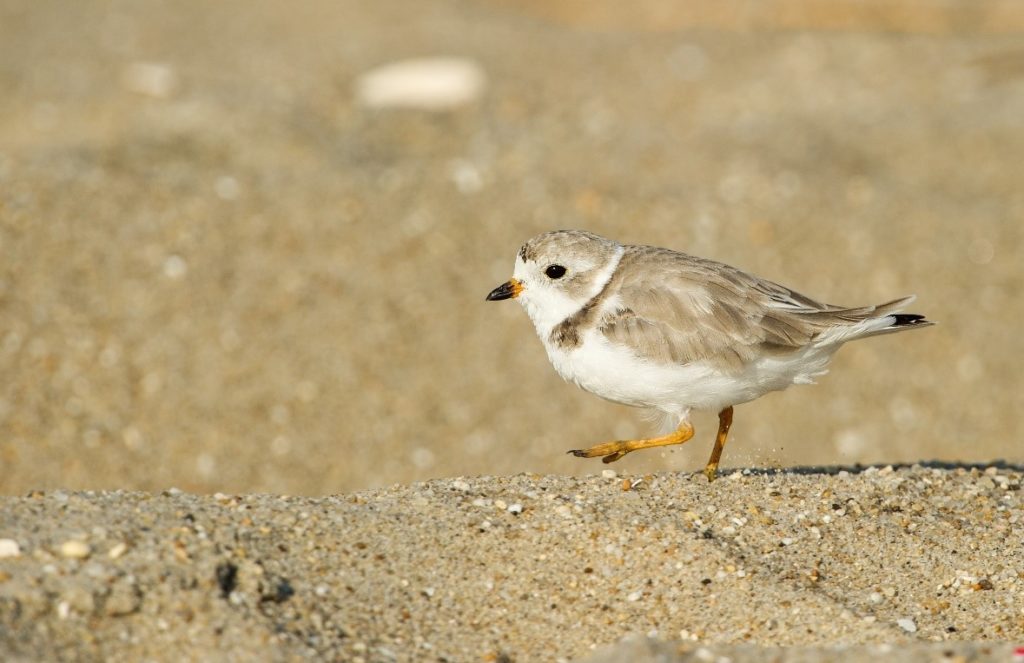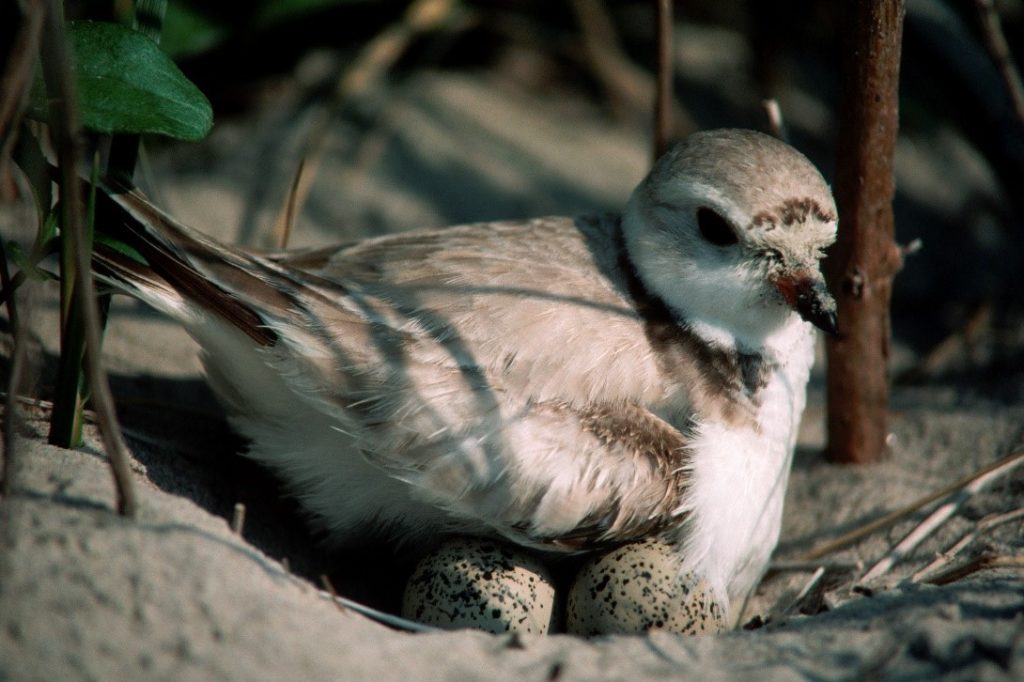July 14, 2020
DEP : It’s 1996, Piping Plover Comes Back to the Beach to Build Family
Consider the small victories.

In 2019, there were 114 pairs of piping plovers nesting in New Jersey. That number represented a 19 percent increase from 2018 (just 96 pairs) and a 7 percent increase from 2017 (105 pairs), according to a beach-nesting management report from the DEP’s Division of Fish & Wildlife and the Conserve Wildlife Foundation of New Jersey.
This plover, as well as the least tern and the black skimmer, are the state’s endangered beach nesting birds. Each year, they make their home on the Garden State’s sandy barrier islands, nesting on open beaches and in sparsely vegetated dunes.
More findings about piping plovers from the report:
- Pairs nested at 27 sites statewide.
- There were 165 nests, with 98 hatching (60 percent), 65 failing (39 percent) and two with unknown outcomes (1 percent).
- The statewide productivity rate was 1.24 fledglings/pair, a decrease from 2018 (1.51 fledglings/pair), but above the long-term average of 1.03 fledglings/pair.
- The majority of plovers (71 percent) nested in just two federal areas (Gateway National Recreation Area at Sandy Hook and the Edwin B. Forsythe National Wildlife Refuge in Galloway).
- It was the sixth year that plovers were banded in New Jersey – 131 birds were banded, bringing the total since 2012 to 647. The banding helps to track trends and population dynamics.
The beach-nesting report says the 2019 numbers represent “one of the biggest single year jumps since records began and quelled concerns stemming from two years of declines.”
Indeed, a small but significant victory.
How can humans help beach-nesting birds? They require only a very small portion of our beaches to survive, according to Fish & Wildlife, which offers these tips for sharing the Shore’s sand:
- Respect all areas fenced or posted for the protection of wildlife.
- Do not approach or linger near birds or their nesting areas.
- Control dogs. Dogs are not permitted on most beaches during the nesting season. If dogs are allowed on the beach, keep them leashed and well away from nesting areas.
- Do not leave or bury trash or food scraps on the beach. Garbage attracts predators, such as gulls, crows, raccoons, foxes, skunks and feral cats, which may prey upon eggs or chicks.
And now, a look at 1996 …
In this year, endangered piping plovers returned to North Brigantine Natural Area in Atlantic County, following several years’ absence.
To protect these vulnerable birds in an area frequented by off-road vehicles, the DEP worked with the City of Brigantine and the N.J. Beach Buggy Association to introduce an “escort” program along a 200-yard section of the beach. Gates were installed near the five-nest nursery and manned by employees, who slowed vehicles to 5 mph to avoid hitting the tiny, beach-nesting birds.

Piping plovers are present at the Jersey Shore from mid-March through late summer.
They are small, with sandy-brown upper parts that provide camouflage in their favored beach environments, white underparts, a black “eyebrow” across the forehead and a black band across the chest. They have a black-tipped orange bill and orange legs.
Nests are often built in flat, open areas of sand, with shell fragments and little vegetation that might provide cover for predators. The nest usually holds four eggs that are cream or sand-colored, with small brown speckles or spots. The small end of the eggs all point toward the center of the nest.
Once common, piping plovers were nearly wiped out locally by egg collecting and hunting in the 1800s and 1900s. They also were often used as fashion accessories or hat ornaments. The Migratory Bird Treaty Act of 1918 helped the population recover somewhat through the 1930s. However, coastal development and recreation continued to cause declines.
In 1984, the piping plover was listed as an endangered species in New Jersey. Today, they remain among the most endangered species in the state, with nesting pair populations averaging near 100 in recent years.
###